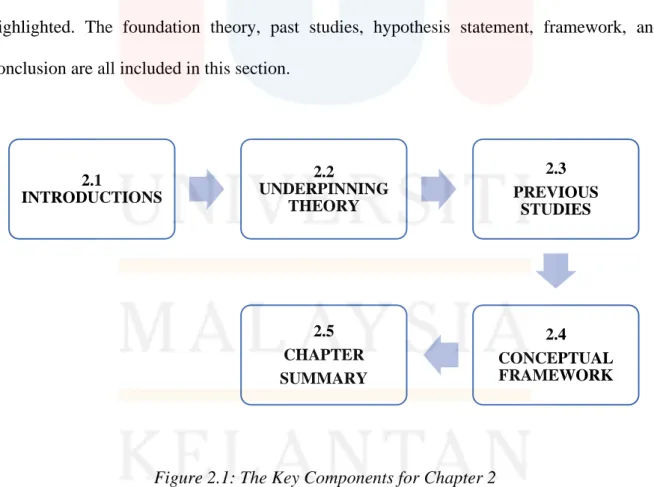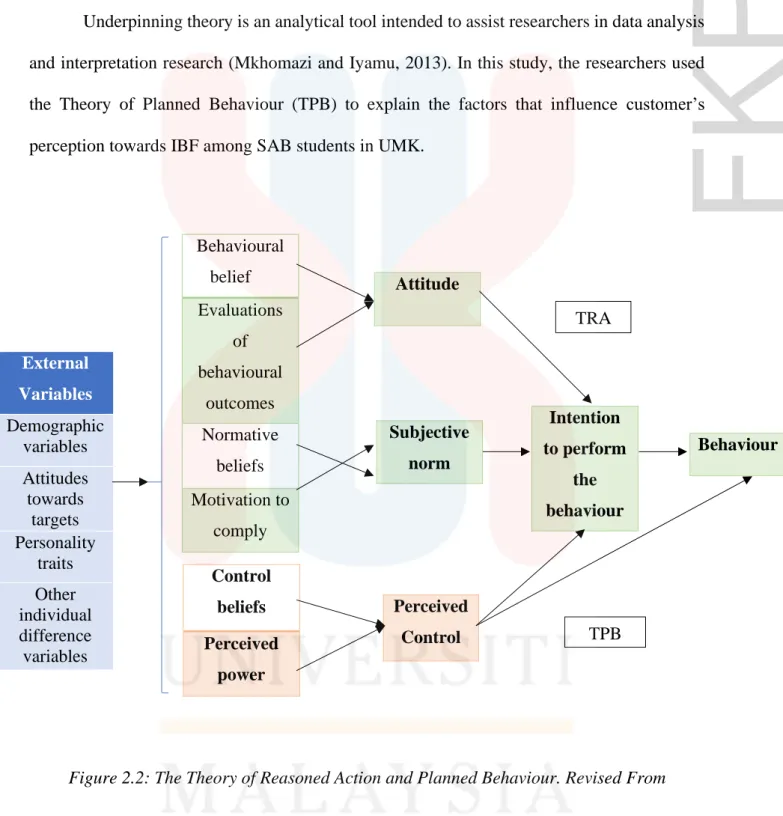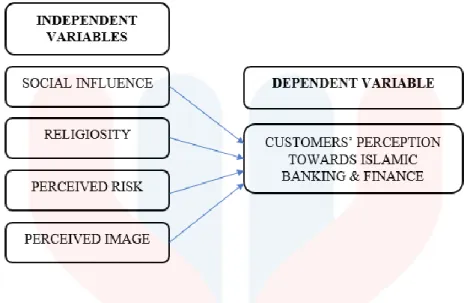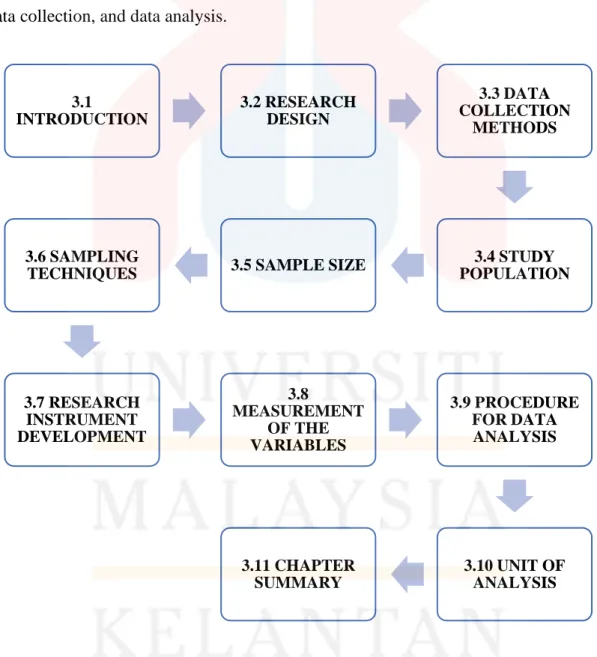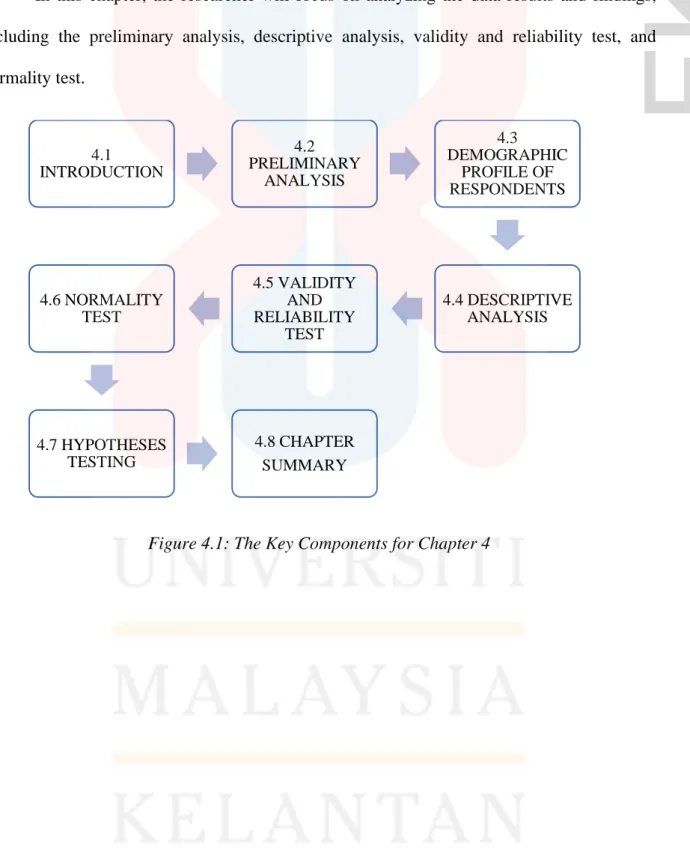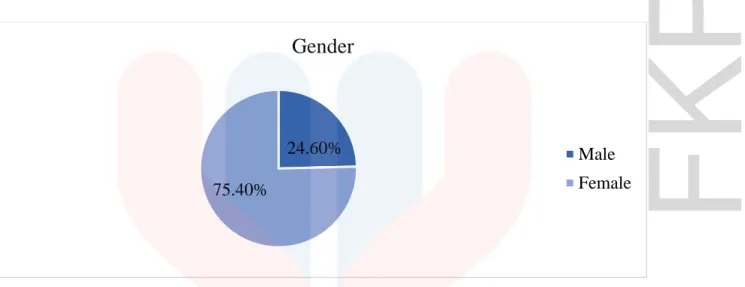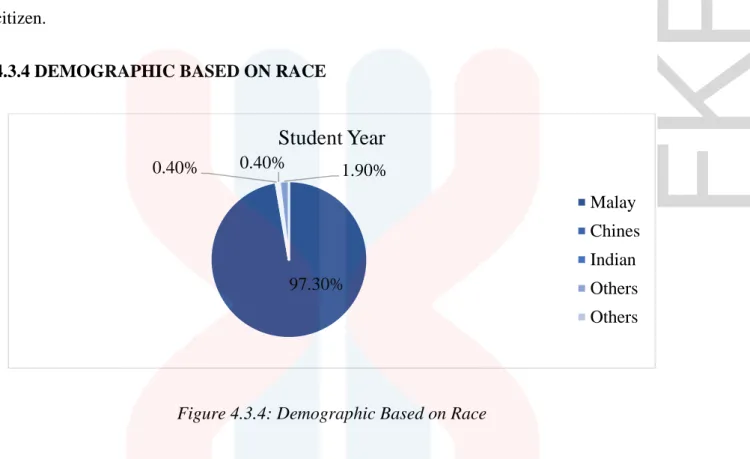Towards Islamic Banking and Finance (IBF) Among Islamic Banking and Finance Program (SAB) students. Therefore, this study was conducted to investigate the factors that influence customer perceptions towards Islamic Banking and Finance (IBF) among Islamic Banking and Finance program (SAB) students in Universiti Malaysia Kelantan (UMK). This study contributes to the body of knowledge in Islamic banking while imparting organizational knowledge through its propositions.
INTRODUCTION
- BACKGROUND OF THE STUDY
- PROBLEM STATEMENT
- RESEARCH OBJECTIVES
- RESEARCH QUESTIONS
- SCOPE OF THE STUDY
- SIGNIFICANT OF STUDY
- DEFINITION OF TERM
- CUSTOMER’S PERCEPTION
- SOCIAL INFLUENCE
- RELIGIOSITY
- PERCEIVED RISK
- PERCEIVED IMAGE
- ORGANIZATION OF THE PROPOSAL
- CHAPTER SUMMARY
At the beginning of the establishment of Islamic banking, customers chose Islamic banking because it is based only on religious factors. The advantages and strengths found in the operation of the Islamic banking system have influenced customers to choose and use the products and services offered by Islamic banking. This shows that the management of Islamic banking itself is inefficient, which tarnishes its image.
LITERATURE REVIEW 2.1 INTRODUCTION
PREVIOUS STUDIES
- CUSTOMER’S PERCEPTION TOWARDS IBF
- PERCEIVED RISK
- PERCEIVED IMAGE
Studies related to the intention to use Islamic banking products often confirm the role of subjective norm or social influence (Nelson et al., 2017). The level of consumer awareness of products and services in Islam can also influence the choice of Islamic banking (ElMassah et al., 2021). In the context of Islamic banking, customers' perception of risk plays a very important role in their trading and investment decisions towards the adoption of Islamic banking products and services (Albashir et al., 2017).
CONCEPTUAL FRAMEWORK
H4: There is a positive relationship between perceived image and client's perception towards IBF among SAB students in UMK.
CHAPTER SUMMARY
RESEARCH METHODS 3.1 INTRODUCTION
- DATA COLLECTION METHODS
- STUDY POPULATION
- SAMPLE SIZE
- SAMPLING TECHNIQUES
- RESEARCH INSTRUMENT DEVELOPMENT
- MEASUREMENT OF THE VARIABLES
- PROCEDURE FOR DATA ANALYSIS
- UNIT OF ANALYSIS
In addition, quantitative research is one of the methods that can confirm hypotheses and test theories, and calculate and compare the obtained data. The variables will be evaluated instrumentally due to the results of the research, and the amount of data obtained will be checked with statistical processes. According to data obtained from the Majlis Perwakilan Pelajar (MPP) UMK Academic Department, the number of students from the SAB program in the 2021/2022 semester is 801 people, consisting of students from 1st to 4th year.
A good sample is statistically representative of the target population and large enough to answer the research question. According to Majlis Perwakilan Pelajar (MPP) UMK academic department, the total number of students is 801. The researcher conducted a pilot test using Cronbach's alpha to evaluate the effectiveness and quality of the results.
The reliability of the respondents on the given questionnaire will then be evaluated in this study using the coefficient alpha expressed as Cronbach's alpha. The interval scale used in the research questionnaire is a numerical scale that uses the Likert scale to see the level of propensity of respondents' opinions on the mentioned variables. The study population included 801 students from the SAB in UMK, but according to the sample size, the researcher took only 260 respondents to answer the questionnaire which was distributed using a simple sampling method.
In developing the research instruments, some items will be included in the questionnaire that will be tested using a pilot test and the reliability and validity of the items will be seen.
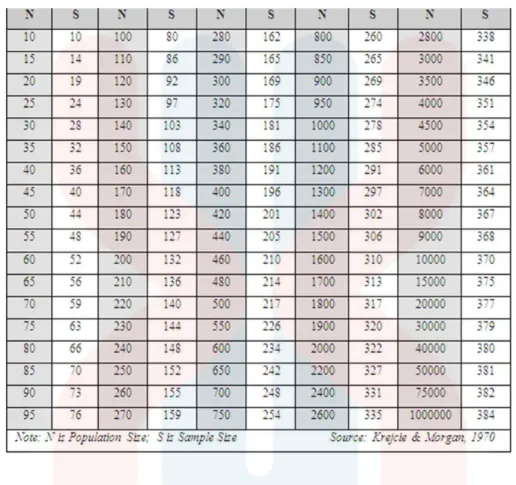
DATA ANALYSIS AND FINDINGS 4.1 INTRODUCTION
DEMOGRAPHIC PROFILE OF RESPONDENTS
- DEMOGRAPHIC BASED ON NATIONALITY
- DEMOGRAPHIC BASED ON RACE
- DEMOGRAPHIC BASED ON STUDENTS YEAR
- DEMOGRAPHIC BASED ON TYPE OF BANKING USED
The study included recognition of respondents' backgrounds during data collection, which is an essential component of this study. After collecting data from a questionnaire given to SAB students at UMK, this part of Chapter 4 will explain their student demographics in more detail. The second highest and third highest percentages have only a small difference between them, which is only 0.4%.
While the third highest has a total of 21.9% (57 respondents) consisting of the age group of 22 years. The pie chart shows the percentage of SAB students in UMK who are Malaysian citizens, comprising 259 respondents. The pie chart shows that the majority of SAB students among the UMK respondents are of Malay origin, which is 253 respondents (97.3%).
Most respondents who answered this online survey were SAB students in UMK from fourth year, that is 99 respondents (38.1%), followed by first year students, 70 respondents (26.9%) and third year students, 48 respondents ( 18.5 %). Based on the pie chart above, the number of respondents using Islamic banking is 63.10%.
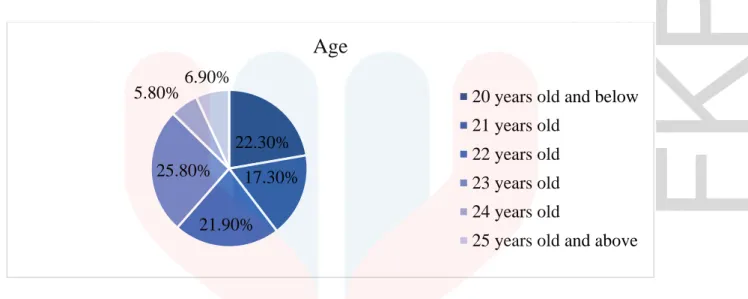
DESCRIPTIVE ANALYSIS
- CUSTOMER’S PERCEPTION TOWARDS IBF
- RELIGIOSITY
- PERCEIVED IMAGE
- RELIABILITY RESULT FOR CUSTOMER’S PERCEPTION TOWARDS IBF, SOCIAL INFLUENCE, RELIGIOSITY, PERCEIVED RISK AND PERCEIVED
The highest mean was question 8, which was 4.33, where respondents strongly agreed that knowledge of the Islamic banking system influences customer perception. The highest average was question 1, which was 4.54, where respondents strongly agreed that by obeying Islamic commandments they can distinguish between halal and haram products based on Sharia law. The lowest average was question 4, at 4.42, where respondents also strongly agreed that they understand the concept of uncertainty, which is prohibited in the IBF system.
The lowest mean was question 4, which is 4.12, where the respondents also strongly agree that the use of IBF can avoid financial loss. The highest average was question 6, which is 4.40, where the respondents strongly agree that an honest image builds customers' trust in banking and institutions. This showed the range of alpha coefficients for reliability analysis in table 4.5. According to Alain et al. 2020) values of 0.4 and below were considered undesirable, while values of 0.9 and above were considered highly reliable.
Sarstedt (2017), based on the rules of thumb Cronbach's Alpha coefficient from table 4.5.1.1, it can be concluded that the coefficient alpha for the dependent variable was 0.918. According to Sarstedt et al. 2017), the general guidelines for Cronbach's Alpha coefficient can be inferred from Table 4.5.1.2 that the alpha coefficient was of the dependent variable. Essentially, this test proved that the participants understood and answered each question accurately. 2017), in accordance with the general guidelines for Cronbach's Alpha coefficient, it can be seen from Table 4.5.1.3 that the coefficient alpha for the dependent variable was 0.951.
According to Sarstedt et al. 2017), for the rules of thumb, Cronbach's alpha coefficient from Table 4.5.1.4 means that the coefficient alpha for the dependent variable was 0.941.
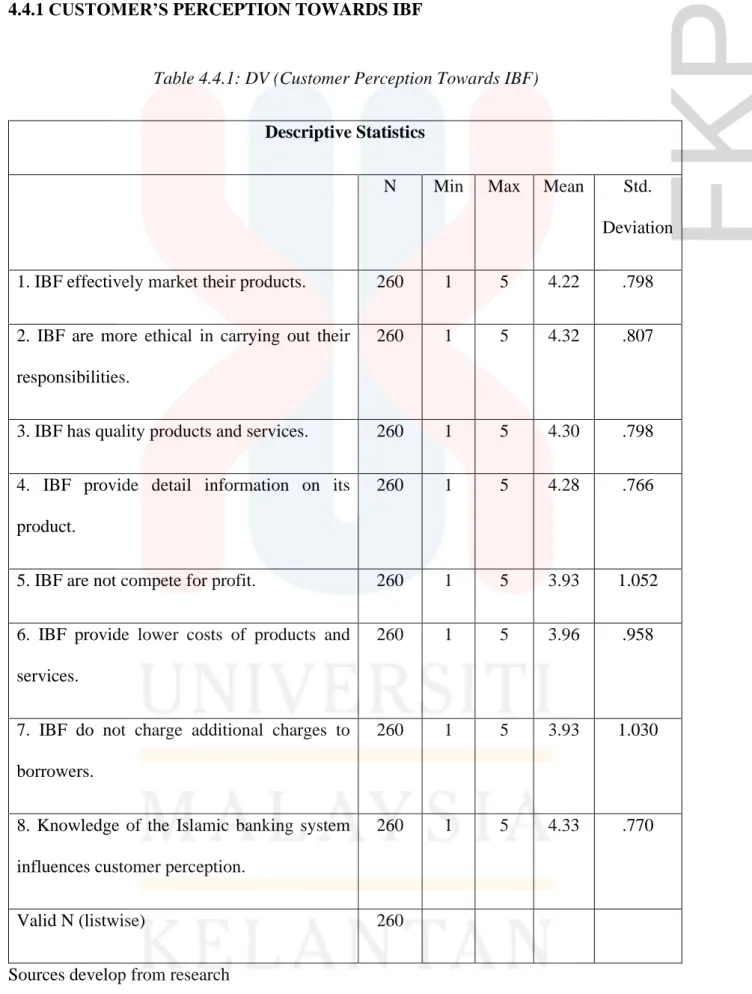
NORMALITY TEST
In conclusion, this test showed that the respondents understood and answered all the questions correctly. According to Table 4.6, Kolmogorov-Smirnov and Shapiro-Wilk prove that the p-value for the four hypotheses with 0.05 or less is insignificant based on the normality test. As a result, the obtained data can be categorized as abnormal data, and the researcher tests his hypothesis using the Spearman test method.
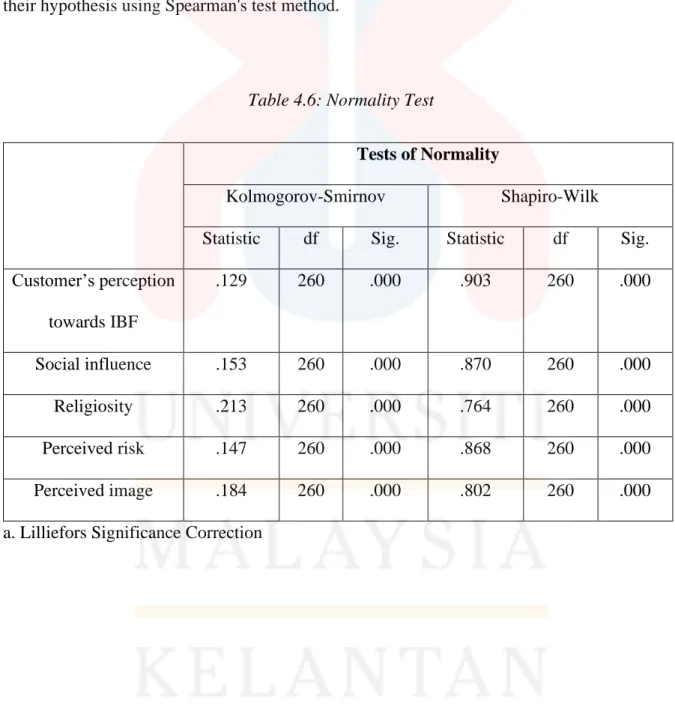
HYPOTHESES TESTING
- HYPOTHESIS 1
H1: There is a positive relationship between social influence and customer perception towards IBF among SAB students in UMK. The relationship between social influence and customer perception towards IBF is shown in the table above. H2: There is a positive relationship between religiosity and customers' perception towards IBF among SAB students in UMK.
The association between religiosity and client's perception towards IBF is depicted in the table above. It can therefore be concluded that among SAB students in UMK there is a favorable correlation between religion and customers' perception towards IBF. H3: There is a positive relationship between perceived risk and customers' perception towards IBF among SAB students in UMK.
The relationship between perceived risk and customer perception towards IBF is shown in the table above. Thus, it can be concluded that among SAB students in UMK, perceived risk and customer perception towards IBF are positively correlated. The relationship between perceived image and customer perception towards IBF is shown in the table above.
Thus, we can conclude that there is a positive correlation between the perceived image and customer perception of IBF among SAB students in UMK.
DISCUSSION AND CONCLUSION 5.1 INTRODUCTION
DISCUSSION
- HYPOTHESIS 1
- HYPOTHESIS 3
- HYPOTHESIS 4
The conducted research is aimed at testing the factors that influence customer perception towards IBF among SAB students at UMK. The purpose of this study is to determine the factors that influence customer perceptions of IBF among SAB students at UMK. This positive qualitative relationship indicates that the social influence factor is considered an important determinant that can influence the user's perception of IBF.
There is a significant relationship between social influence effectiveness and customer perception of IBF among SAB students at UMK. A moderate positive relationship indicates that the religious factor is considered important that can influence the user's perception of IBF. In table 4.7.3 in chapter 4, the researchers summarize that the alpha coefficient for perceived risk and customer perception towards IBF is r=0.716, which has a positive correlation and excellent stability according to the Cronbach alpha study by (Taber, 2018).
Therefore, a significant positive quality relationship between the variables supports H3, which is that there is a significant relationship between perceived risk effectiveness and customer perception of IBF among SAB students at UMK. Finally, table 4.7.4 in chapter 4 states that the alpha coefficient for perceived image and customer perception towards IBF is r=0.677, which has a positive relationship and is quite reasonable according to the Cronbach alpha study by (Taber, 2018) . This moderately positive relationship indicates that the factor of perceived image is considered necessary, which may influence the user's perception of IBF.
Therefore, the significant positive moderate relationship together with the variables supports H4 and there is a significant relationship between the effectiveness of the perceived image and the customer's perception of IBF among SAB students in UMK.
IMPLICATIONS OF THE STUDY
LIMITATIONS OF THE STUDY
Moreover, it can be used as evidence to strengthen the arguments and explanations for it, by showing that previous researchers have done this research. It is appropriate for a sample that includes professionals such as bankers and other working class people.
RECOMMENDATIONS FOR FUTURE RESEARCH
The influence of spiritual brand attributes on corporate brand image of Islamic banking institutions in Malaysia. Growth and challenges of the Islamic banking system: a perspective from the British Muslim community in Bangladesh in London, United Kingdom. The effect of religiosity and financial considerations on behavioral intention towards the Islamic banking industry: the mediating role of attitude.
Determinants of Intention to Adopt Islamic Banking in a Non-Islamic Developing Country: The Case of Uganda. Determinants of intention to use Islamic banking products among Malay Muslims: A case study in Johor Baharu. The Impact of Islamic Branding on Consumer Preferences for Islamic Banking Services: An Empirical Investigation in Malaysia.
Awareness of Islamic banking products and services among non-Muslim students in selected northern universities in Malaysia. The Comparative Review Model in Measuring Islamic and Conventional Banking System of the Islamic Banking Culture in Malaysia.
